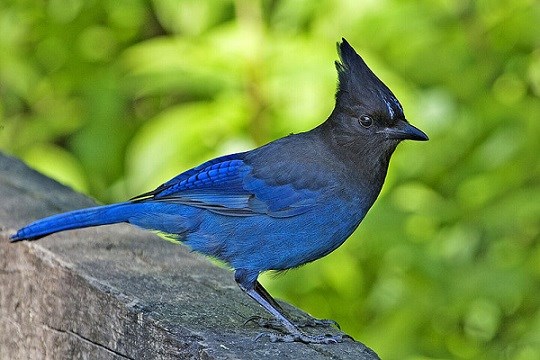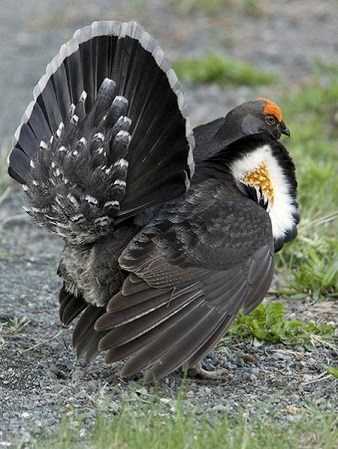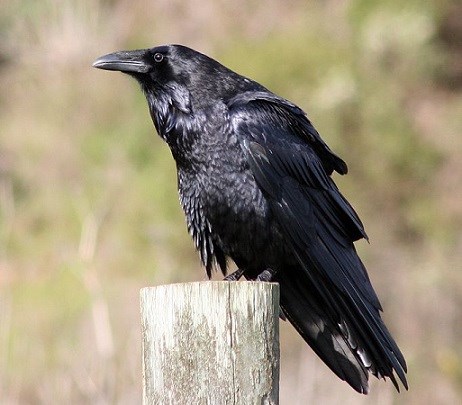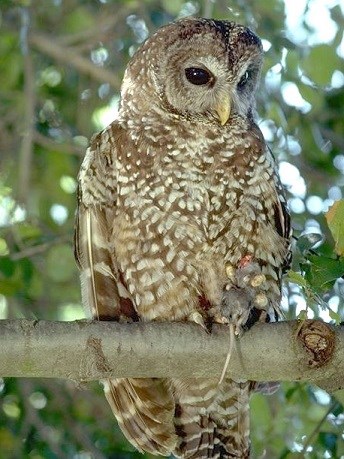|
To the untrained eye, the birds we have at Oregon Caves may appear quite similar: you might see them as quickly vanishing flashes of color, or perhaps you perceive only their movement. However, it’s worth appreciating the different species we have because each of our birds has a special role to play in maintaining the health of the forest. 
NPS Steller's Jay (Cyanocitta stelleri)This large songbird was named after Georg W. Steller, a German naturalist who discovered it on an Alaskan island in 1741. Steller's jays can be found in coniferous and coniferous-deciduous forests, typically at elevations of 3,000 to 10,000 feet. They are opportunistic ground foragers, eating insects, seeds, berries, nuts, small animals, eggs, and nestlings as well as garbage and unguarded human food. 
NPS Sooty Grouse (Dendragapus fuliginosus)Sooty (formerly Blue) grouse are hardy species well adapted to life in these mountains. Although their summer diet consists of insects, seeds, and fruits, they are able to digest conifer needles –something abundant in this forest but not always digestible. In late summer they eat vaccinium (blueberry/huckleberry relative) – unique fire-adapted subalpine plant. The grouse helps disperse the plant by leaving seeds in its droppings which act like fertilizer. 
NPS Raven (Corvus corax)This intelligent large-bodied black bird is found across western and northern North America. They are extremely adaptable to all environments ranging from heavily forested areas to open grasslands. Ravens are omnivores and will eat almost anything they can find. This includes anything from carrion (dead animals), nuts/berries, small animals, and human garbage. 
NPS Northern Spotted Owl (Strix occidentalis)The Northern Spotted Owl is a nocturnal bird that hunts small mammals such as flying squirrels and woodrats. It lives in expansive old-growth forests with complex, multilayered understories such as the forest here at Oregon Caves. The U.S. Fish and Wildlife Service lists the Northern Spotted Owl as Threatened. |
Last updated: May 21, 2018
